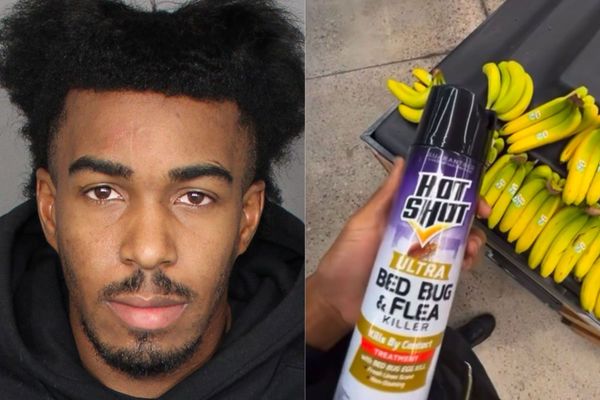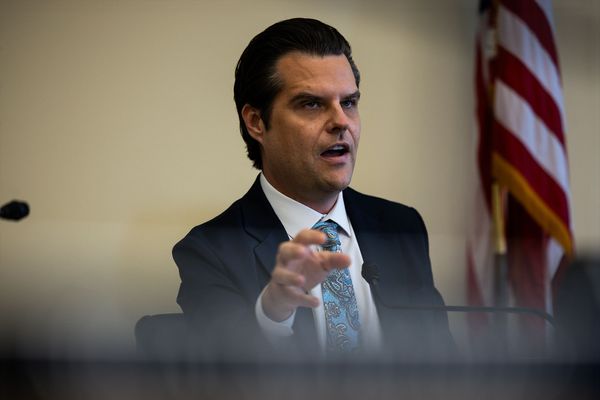
Despite Peter Dutton this morning unveiling “details” of his plan to build a fleet of nuclear power plants across the country by 2040, we’re still no closer to understanding exactly how the Liberal leader will achieve such an improbable feat.
Dutton has committed the Coalition to building seven reactors on the sites of coal-fired power stations: two in Queensland, at Tarong and Callide, two in NSW, at Liddell and Lithgow, one at Port Augusta in SA, one at the current Loy Yang A site in the Latrobe Valley in Victoria, and one at Muja in south-western WA.
There is a little detail in the timing. The glossy brochure handed out by the Coalition claims “the timeline for establishing a civil nuclear program in Australia including building two establishment projects is 10 to 12 years from the government making a decision until zero emissions nuclear electricity first enters the grid.”
Separately, it also states “a federal Coalition government will initially develop two establishment projects using either small modular reactors or modern larger plants such as the AP1000 or APR1400. They will start producing electricity by 2035 (with small modular reactors) or 2037 (if modern larger plants are found to be the best option).”
That timeline is at odds with the CSIRO’s estimate that nuclear could not be deployed until 2040 at the earliest. There are no small modular reactors currently in operation in any developed country, and the US project touted by the Coalition, NuScale in Idaho, was shut down in November due to soaring costs.
According to the CSIRO’s costings, seven reactors at $8.6 billion each for a 1000MW reactor, would cost $60.2 billion, however the first build would suffer a first of a kind premium of up to 100% in addition to that. That does not include a cost blowout of 20-30% of a kind that has characterised nearly all major infrastructure projects in Australia over the past two decades.
According to the CSIRO, small modular reactors will cost two to three-and-a-half times more than large-scale nuclear plants per unit of output.
Dutton has also confirmed what Crikey has long pointed out — the reactors will have to be publicly owned, meaning taxpayers will fund the $60-90 billion cost.
“The Australian government will own these assets, but form partnerships with experienced nuclear companies to build and operate them,” Dutton said this morning.
This reduces, but does not remove, one of the key impediments to any nuclear build — that companies will refuse to invest in their construction because of a potential change in government, with a new government restoring a nuclear ban. The Coalition would likely offer onerous break fees as part of any deal with companies interested in building reactors, in order to deter future governments from halting construction.
It will also mean the Commonwealth will enter the power generation industry at a truly colossal scale, far beyond what any state government has ever managed. Dutton has made a commitment to a radical expansion in the size and role of the federal government.
However, there remains the biggest hurdle of all: state governments. The Coalition might be able to purchase existing sites from private companies to build the reactors — though not in Queensland, where Callide and Tarong are government-owned. But it will not be able to build reactors without state cooperation, including the repeal of state prohibitions on nuclear power. Dutton joked this morning about premiers and buckets of money, but his chances of convincing Labor governments in NSW, Victoria, South Australia and Western Australia to allow nuclear power plants appear slim.
Dutton may have more luck in Queensland, with his own party, the Liberal Nationals, set to take power in October. However, state LNP leader David Crisafulli appeared to kill that off this week, saying when asked about repealing Queensland’s ban on nuclear power “the answer is no, and I’ve made my view very clear on that.”
Crisafulli is likely to come under more pressure between now and the state election to categorically rule out cooperating with Dutton.
Dutton has refused to offer any costing of his plan, but Crikey’s CSIRO-based costing this week — just over $70 billion for six (not seven) large-scale nuclear power plants by 2040 — now looks too modest: the addition of small modular reactors will increase the cost, and the extremely rapid timeframe for deployment will likely require greater expenditure.
And if Dutton really thinks he can bribe Labor premiers to open themselves up to a world of political hurt by agreeing to nuclear power plants, he will need a very large bucket of money indeed. That doesn’t feature in the costings — and will likely be in the billions as well.
More realistically, it’s all intended as a distraction from abandoning climate action and maintaining fossil fuel-based power. Dutton and his colleagues were in power for nine years and never expressed the slightest interest in pursuing nuclear power — or even removing the Howard government’s ban on it. There’s a reason for that — in Australia, it’s a ludicrously expensive fantasy.
Do you back Dutton’s nuclear plan? How would you feel about a nuclear power plant near your home? Let us know your thoughts by writing to letters@crikey.com.au. Please include your full name to be considered for publication. We reserve the right to edit for length and clarity.







